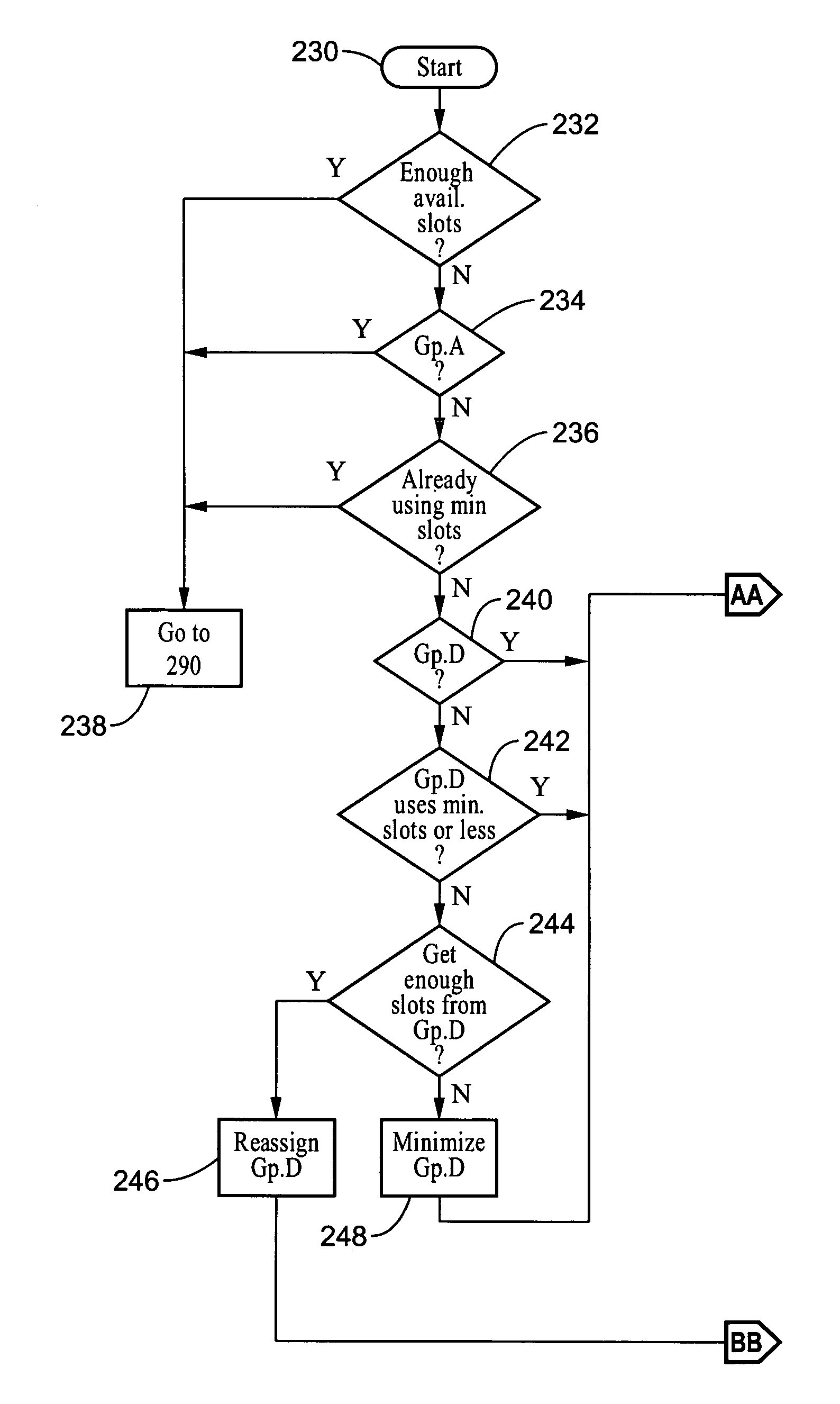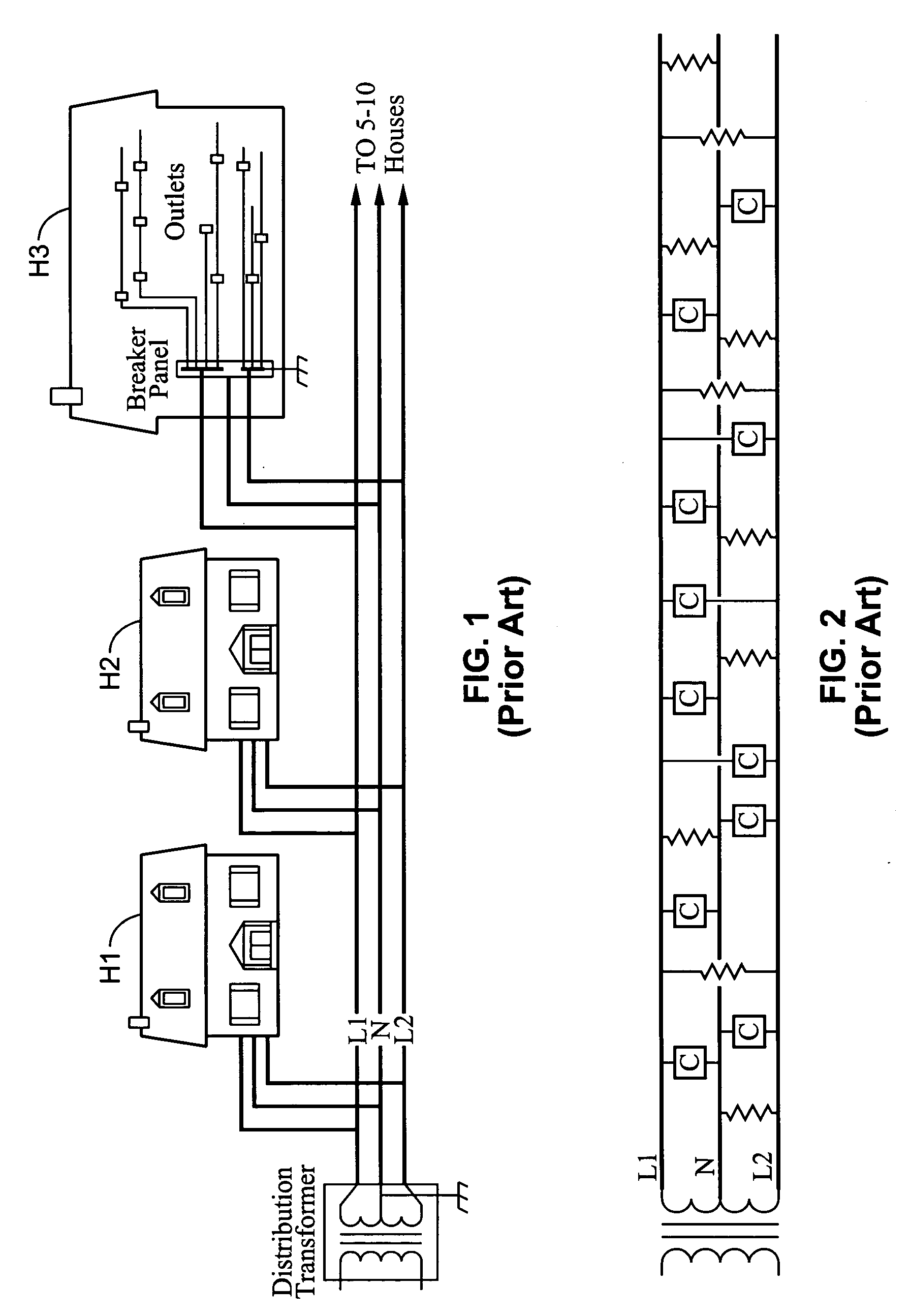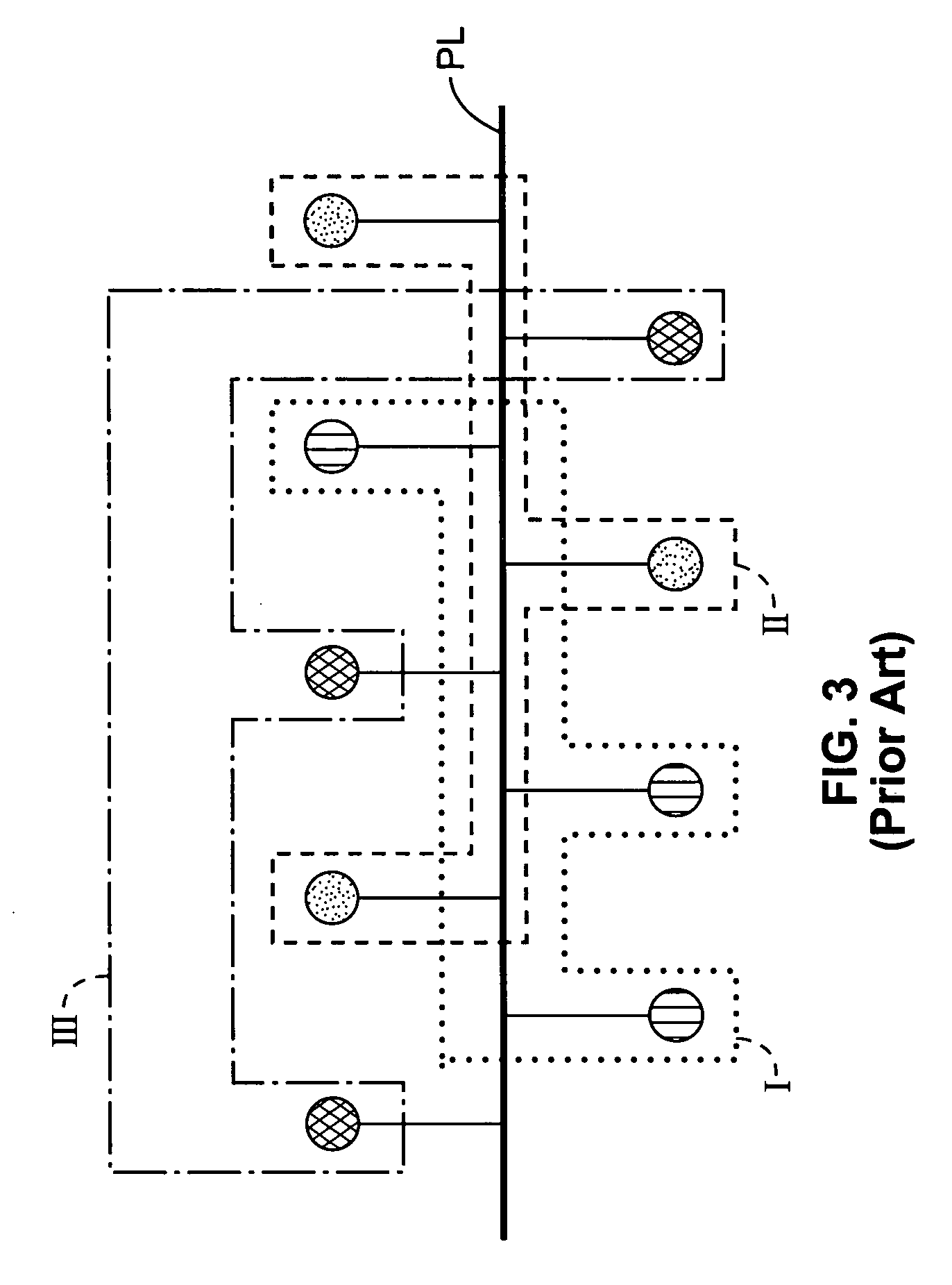Bandwidth management of virtual networks on a shared network
a technology of shared network and virtual network, applied in the field of powerline networks, can solve the problems of simple and easy connection, security threat, and general inconvenient use of isochronous transmission,
- Summary
- Abstract
- Description
- Claims
- Application Information
AI Technical Summary
Benefits of technology
Problems solved by technology
Method used
Image
Examples
Embodiment Construction
[0053] Referring more specifically to the drawings, for illustrative purposes the present invention is embodied in the apparatus generally shown in FIG. 4 through FIG. 10B. It will be appreciated that the apparatus may vary as to configuration and as to details of the parts, and that the method may vary as to the specific steps and sequence, without departing from the basic concepts as disclosed herein.
[0054] 1. Detail of Network Bandwidth Management System and Method.
[0055] 1.1 Power Line Network.
[0056]FIG. 4 shows an example of a power-line network 10. Distribution transformer 12 sends AC power over power-lines 14 to the power-line networks 16 and 18 within homes 20 and 22. In home 20, a server 24 and client 26 are connected into power-line network 16. Similarly, in home 22, a server 28 and client 30 are plugged into power-line network 18. Unused AC power outlets are shown within house 20 to which additional powered devices may be connected for control over the power-line netwo...
PUM
 Login to View More
Login to View More Abstract
Description
Claims
Application Information
 Login to View More
Login to View More - R&D
- Intellectual Property
- Life Sciences
- Materials
- Tech Scout
- Unparalleled Data Quality
- Higher Quality Content
- 60% Fewer Hallucinations
Browse by: Latest US Patents, China's latest patents, Technical Efficacy Thesaurus, Application Domain, Technology Topic, Popular Technical Reports.
© 2025 PatSnap. All rights reserved.Legal|Privacy policy|Modern Slavery Act Transparency Statement|Sitemap|About US| Contact US: help@patsnap.com



